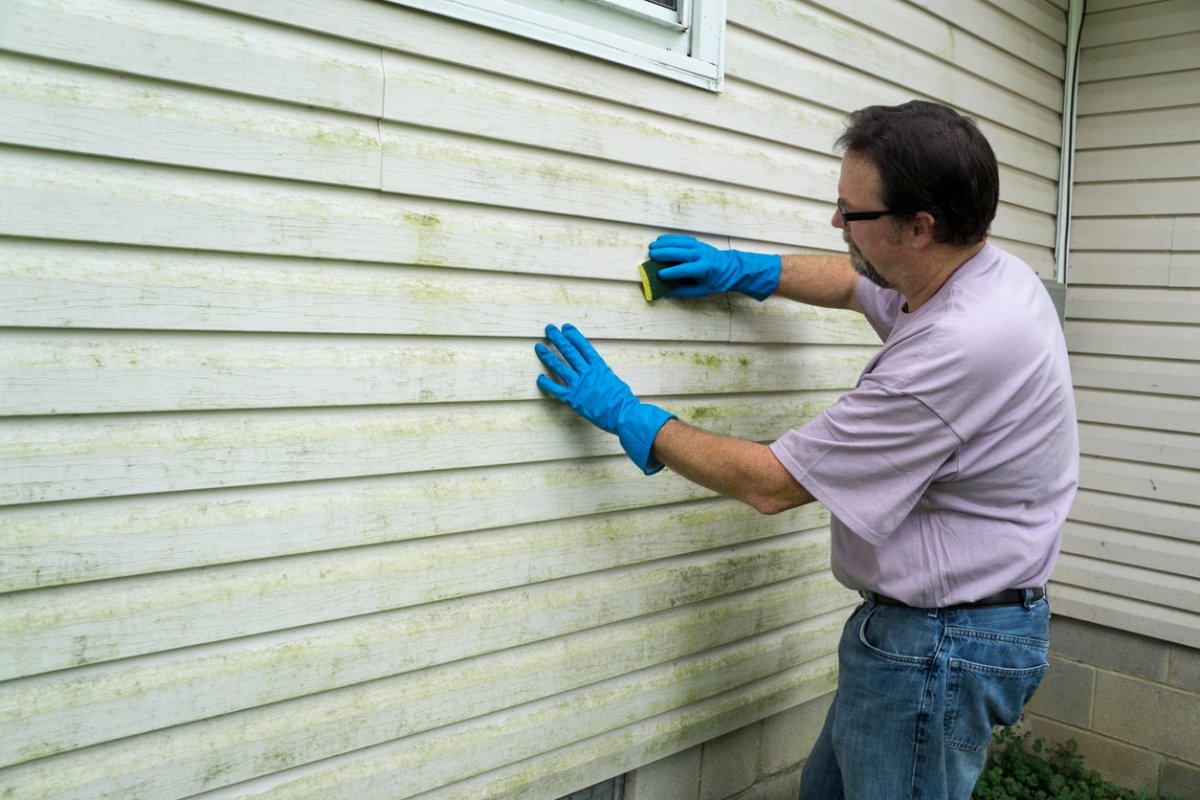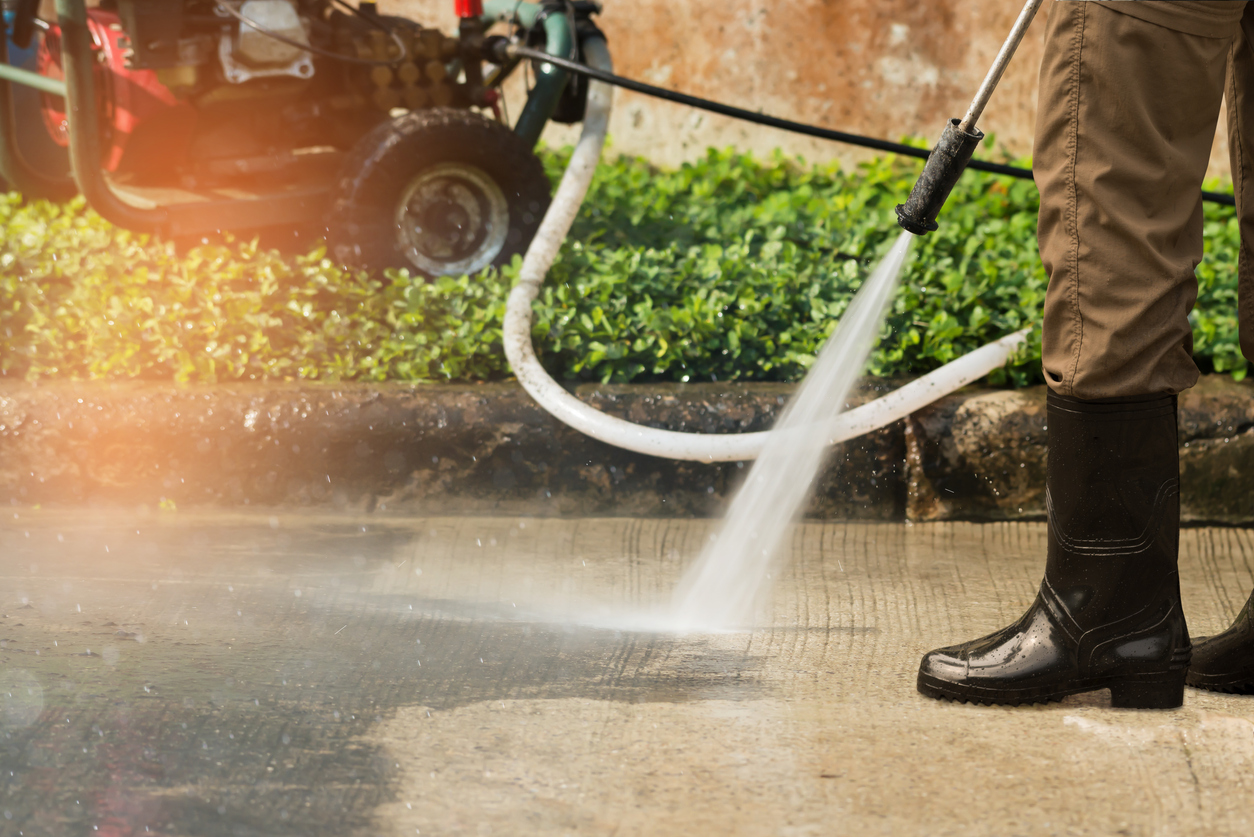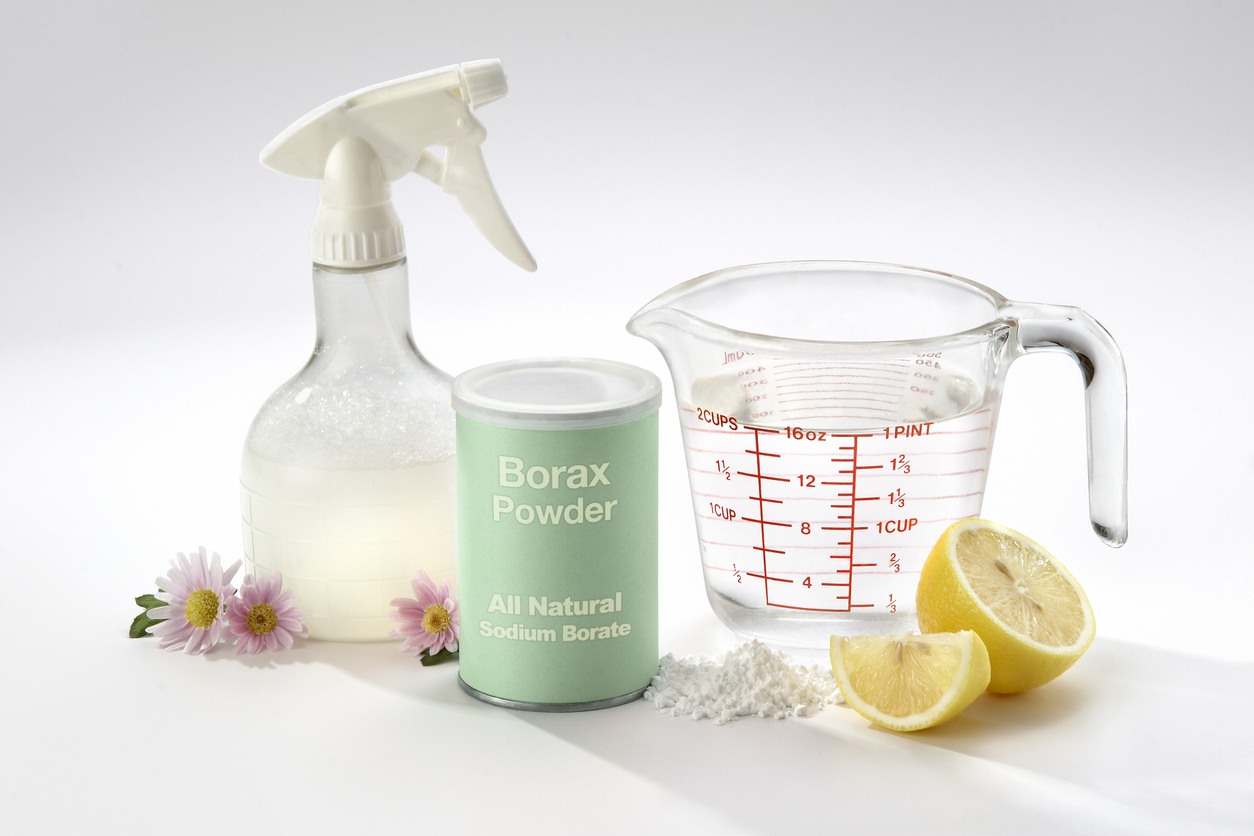

We may earn revenue from the products available on this page and participate in affiliate programs. Learn More ›
Q: My wife and I recently bought a fixer-upper home, and are doing a lot of the repairs ourselves. Some of the projects we have in mind—cleaning our deck and siding, for example—recommend using trisodium phosphate. We’ve never used TSP and from what we gather, it sounds like it might be dangerous. What is trisodium phosphate, and is it safe to use?
A: It wasn’t so long ago that trisodium phosphate (TSP) was a go-to choice for tough cleaning jobs, especially on exteriors. Diluted in water and applied often with a stiff scrub brush, it can remove stubborn grease stains as well as mold and mildew. In recent years, however, TSP’s popularity has waned, and the reasons have little to do with its performance. TSP was, and remains, a highly effective cleaner.
More and more people are steering clear of cleaning with TSP simply because, due to its potency, working with the stuff can pose risks to both personal health and the environment. High levels of phosphates can cause a spike in algae blooms that produce harmful toxins. For this reason, the EPA may consider phosphate-containing products as pollutants, something the Clean Water Act aims to regulate.
RELATED: 15 Cleaners That Can Do the Most Damage
Here, we look at the pros and the cons of working with a trisodium phosphate cleaner so that you can decide whether or not it’s the right choice for you and your family, your home, and the project at hand.
What is trisodium phosphate?
Trisodium phosphate is a white, dry powder commonly used as a cleaning agent. It consists of a mix of trisodium phosphate and sodium carbonate, typically in a 4:1 or 3:1 ratio. It’s inexpensive to purchase and can cut through heavy-duty grease, film, and dirt very easily.
Trisodium phosphate is water soluble, and is mixed with hot water to create a potent cleaning solution. The solution can be used for cutting through soot, grease, dirt, and other nasty messes. It can also prepare previously painted surfaces like walls or cabinets for a fresh coat of paint, which is why it’s been a go-to for painters and contractors for many years.
Despite its affordability and usefulness, TSP isn’t universally loved. TSP contains phosphates, and these substances are illegal in dishwashing and laundry detergents in most areas throughout the U.S. Studies have linked them to algae that release harmful toxins that affect human and animal health. Where legal, however, TSP and TSP substitutes are still readily available.
Cleaning With Trisodium Phosphate

Cleaning with TSP is fairly straightforward, but it’s important to take precautions. You’ll need plastic sheeting, a bucket, two sponges, a pair of safety glasses, a pair of chemical-resistant gloves, a respirator, long sleeves and pants, as well as hot water. TSP is an irritant and can cause itching on exposed skin or airways, so it’s best to cover up.
- Cover anything in the area that you don’t intend to clean with plastic sheeting. This also includes nonporous surfaces like glass and tile.
- Mix TSP with hot water in the bucket. Adjust the ratio as necessary.
- For a heavy-duty mess or stain, mix ½ cup of TSP with 1 gallon of water.
- For general-purpose use, like cleaning cabinets before painting, mix ¼ cup of TSP with 2 gallons of water.
- Mix until the solution is clear. While wearing all of the proper PPE listed above, soak the sponge in the TSP solution. Lift the sponge out of the solution and let it drain into the bucket for a few seconds and then squeeze the sponge until it is damp rather than saturated.
- Starting at the bottom of the stained or soiled area, scrub the sponge back and forth across the surface. Frequently dip the sponge back in the bucket, let it drain, and squeeze excess liquid out while cleaning. Continue cleaning the entire surface.
- Once clean, rinse the bucket well with cold water to remove any residual TSP. Then, fill the bucket with cold water and rinse the surface with a clean sponge soaked in cold water. This is an important step: TSP users must rinse the surface with fresh water to prevent TSP from creating a white film over the surface.
What to Clean with Trisodium Phosphate

TSP is truly a multipurpose cleaner. Mixed in different ratios, it can clean a variety of surfaces safely, even if there are hard-to-remove stains present. DIYers can feel confident using TSP in the following ways:
- Cleaning stains on concrete driveways, walkways, and walls
- Preparing painted surfaces for paint or stripping paint from masonry (as in the case of a paint spill, perhaps)
- Removing tough grease from a variety of surfaces in the kitchen or workshop
- Cleaning creosote and soot from fireplaces.
TSP can also be helpful when removing mold and mildew from surfaces like siding, decks, or even interior walls. Mixing a bit of bleach into the solution gives it a bit more cleaning power, but, with the added bleach, users should be even more careful to wear the proper protective gear.
RELATED: How To: Clean a Stone Fireplace
What Not to Clean with Trisodium Phosphate
Despite its multipurpose nature, there are surfaces with which TSP should not make contact.
- DIYers should not clean glass surfaces like mirrors and ceramic tiles with TSP, because the solution’s acidity could etch the glass surface, and it can also eat away at the grout between the tiles.
- Avoid using trisodium phosphate on metal surfaces, particularly aluminum. The solution can darken and corrode metals, leaving them looking dull and pitted.
- Avoid using TSP on hardwoods like oak and maple, because TSP will darken wood after cleaning with it.
One final point about painted surfaces: TSP is ideal for preparing surfaces for a new coat of paint. However, it will also remove the shininess, or sheen, from glossy painted surfaces, so it’s not a good idea to use it for general cleaning.
The Pros of Cleaning with TSP
- Efficacy: There’s little doubt that trisodium phosphate cleaner works great. In fact, it often succeeds where other solutions fail to do the trick with the most stubborn stains like grease and dirt.
- Easy application: You might expect that using such a powerful cleaning agent would entail a complicated procedure, but once diluted, TSP can be applied simply with a brush or sponge, or via a sprayer.
- Suitability for exterior surfaces: TSP works well on a variety of surfaces without damaging them, including brick and stone, concrete, wood, and roofing. If the surface has been previously painted, you should expect to repaint it after cleaning it with TSP (see next point).
- Paint-stripping capabilities: So strong that it will peel old paint from a surface along with the stains, TSP is often used for cleaning surfaces in the course of preparation for painting, particularly for exteriors. It removes splintered or flaking leftover paint that may impede the bond of the new coat.
- Mold and mildew treatment: One benefit of washing exteriors with TSP cleaner is that, when combined with household bleach, it eliminates mold and mildew.
Pro tip: If you’re using TSP to clean siding, speed up the job with a power washer. If you don’t own one, rent the tool from your local home center. The rental fee may set you back a few bucks, but you’ll save endless trips up and down the ladder.
The Cons of Cleaning with TSP
- Toxicity: TSP is toxic and must be handled with care. That means wearing the appropriate protective gear. Wear full-sleeve clothing in addition to gloves, glasses, and a respiratory mask. And if you’re going to be working indoors, you must adequately ventilate the area.
- Danger to landscaping: If you’re using TSP outdoors (especially if mixing it with bleach), use only as much as you need, and take great care with the runoff. Be sure to protect your landscaping. Choose a windless day for your project, and hose down any nearby plants, shrubs, or tree branches, both before and after the job.
- Environmental concerns: TSP cleaners can also be bad news for the environment. If it ends up in lakes and streams, the phosphates trigger an overgrowth of algae that results in a depletion of oxygen levels in the water, which endangers fish and aquatic plant life.
- Local regulations may limit use: Given the downsides of using TSP, some municipalities have either limited its use or banned its use altogether. Before starting your cleaning project, be sure to check local regulations. Also note that on the shelves of your local home center you may not find TSP, but TSP substitute instead. The latter is much safer to use, but most agree that it doesn’t clean as well as the real stuff.
Trisodium Phosphate Alternatives

If the disadvantages of using TSP give you pause and you’d like to explore other options, consider this eco-friendly TSP substitute: borax. Also known as sodium borate, borax is a naturally occurring mineral compound that will clean many of the same surfaces TSP has been used on for years, including mold- and mildew-stained areas, all without causing damage to nearby plants. (See it in use in our tutorial for homemade deck cleaner.) The good news is that you can usually find this powerful antimicrobial cleaning agent right in your grocery store’s cleaning aisle.
Another substitute that is generally considered to be eco-friendly is Simple Green. This product cleans and cuts grease well (maybe slightly less effectively than TSP). It has a distinct smell that some folks may not enjoy, but it’s generally safe for just about any surface in the home and doesn’t have the same ill effects on waterways as TSP.
But, for folks looking for something a bit stronger, it might be worth checking out Klean Strip TSP No-Rinse Substitute. This product can remove grease, mildew, and food stains, but it is an irritant and proper PPE should be worn when handling (gloves, respiratory, and safety glasses).
